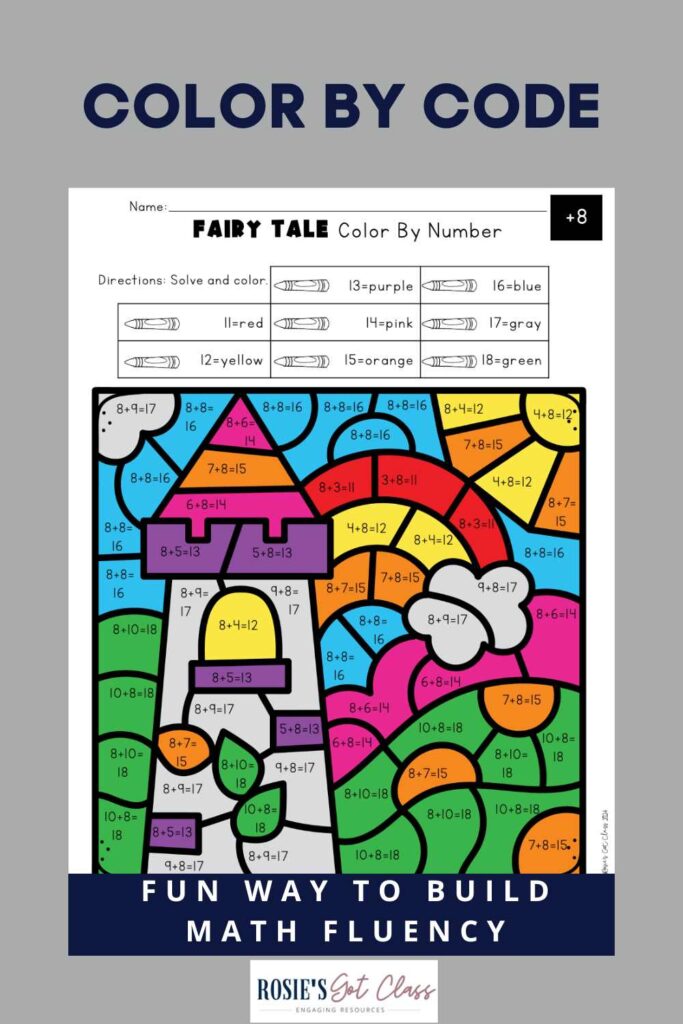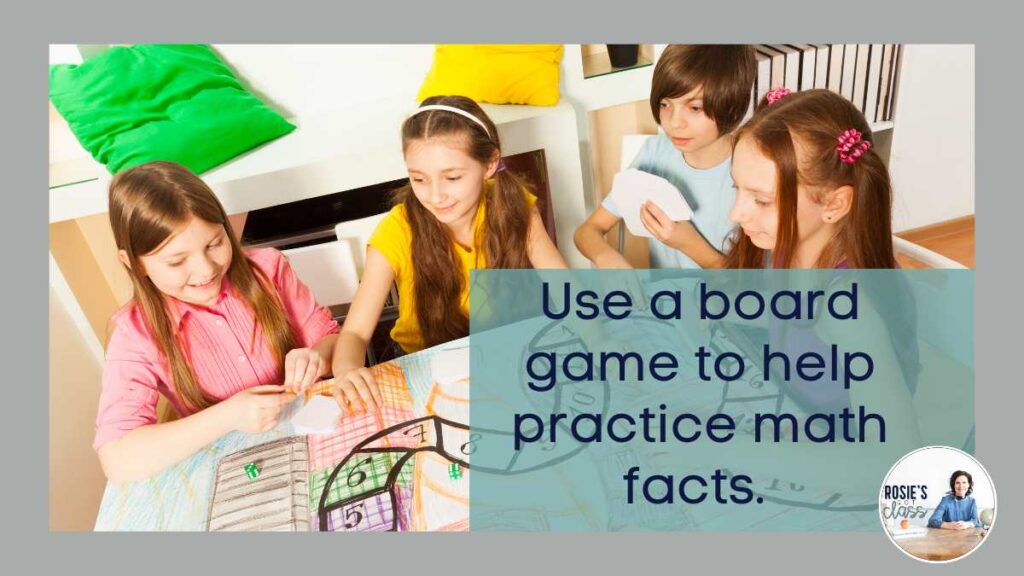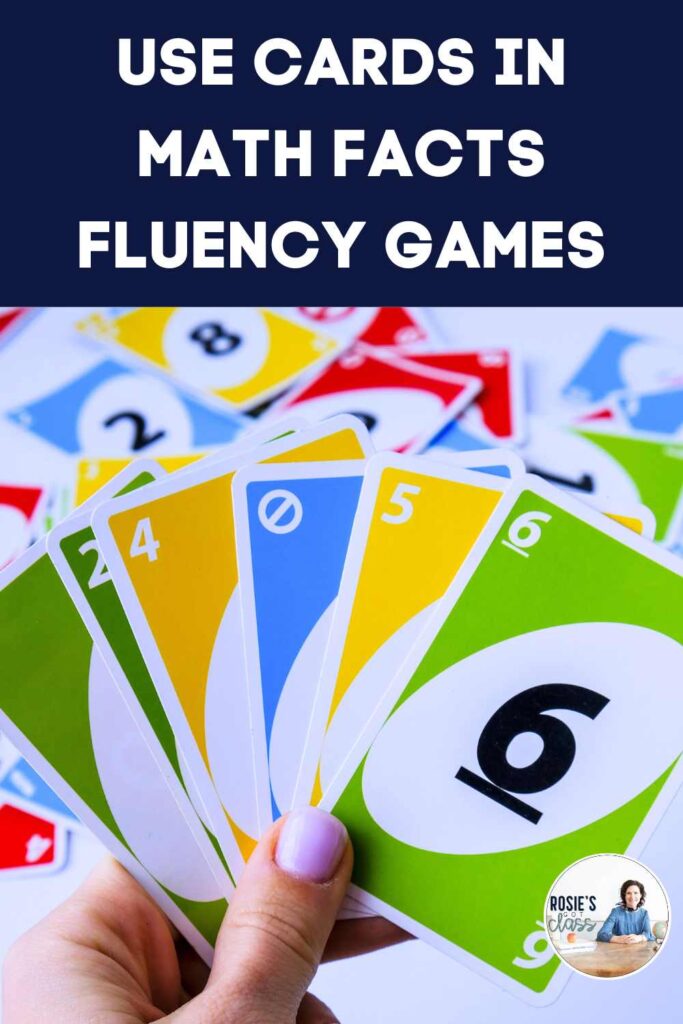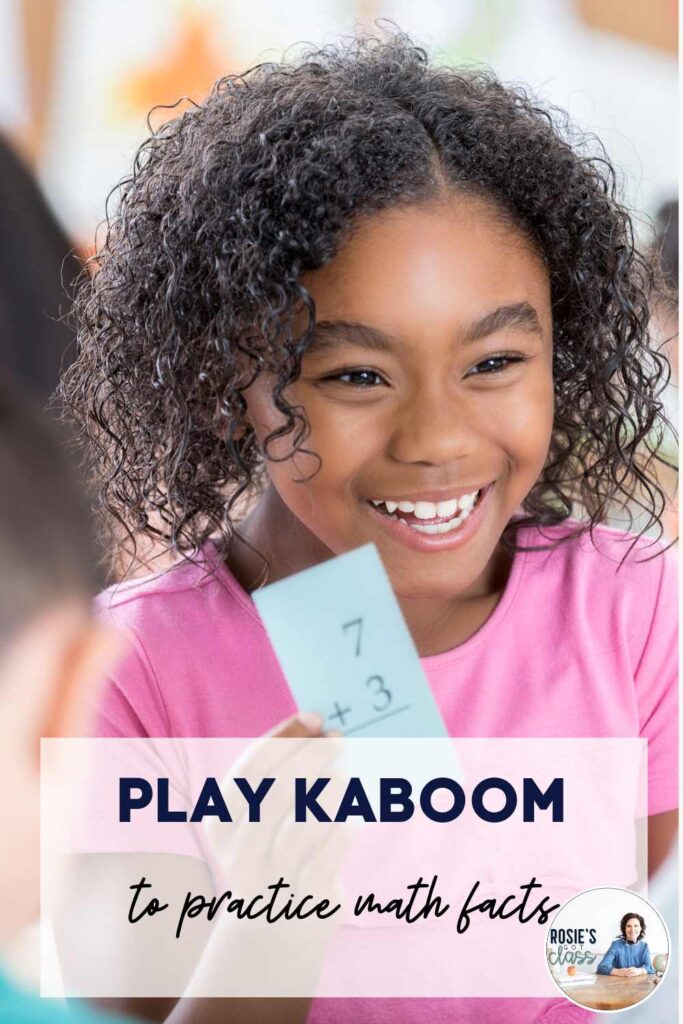
Math facts fluency games are a fun way to build math fact fluency in first and second grades. As students develop a strong foundation in addition, subtraction, and other basic math skills, they gain confidence in their abilities and build the groundwork for future success in math. To make this process engaging, math center games are a fantastic tool. These games allow students to practice their math facts in a low-pressure environment.
Bingo is always a favorite game. This Pet Bingo game allows your students to focus their practice on +2 facts. Your students will love it because each bingo board has a different kind of pet. The best part is that your students are building math fact fluency and don’t even realize it! Use it as addition facts practice games. It is simple for you to prep and use as a math center. To begin using it, simply put your name and email in the boxes. It will be in your inbox so you can begin using it!
Math Facts Fluency Games #1: Color By Code

Color by code activities are a fantastic way to combine math practice with strengthening small motor skills. Students solve math problems and then use the answers to color in a picture according to a code. This activity is perfect for math centers, but it can also be used for fast finishers or even as a calming activity after a more challenging lesson.
How to Use:
- Provide students with a Color By Code picture. Here is a link to some if you need them. These Color By Code pictures focus on specific facts for addition such as +5 or +9.
- Most students know how to complete this kind of page but explain how to do it if they don’t. I like my students to use a pencil to answer all of the equations before they begin coloring. Math facts fluency games help children practice math facts without using flash cards only.
- Students solve each problem and color the section of the picture according to the code.
Students like to look at their pictures when their colorful picture is completed. It is also easy for you to check for understanding because of the colors!
Why They Work:
Color by code activities offer a simple way for students to practice their math facts. The integration of coloring and math makes this activity appealing to a wide range of learners including those who might be less confident in their math abilities.
Math Facts Fluency Games #2: Use a Game Board
Using a game board with math facts is a simple way to help children practice math facts. Find a template for a game board and then write math equations in each square. Have students roll 1 or 2 dice and then answer each question when they land on it. The first child to reach the end is the winner. Another example is Spin and Play which is an interactive game that brings a fun twist to traditional flashcards. Students spin a paperclip on a game board that has a circle on it with different math equations in the pie shape.

Using a game board with math facts is a simple way to help children practice math facts. Find a template for a game board and then write math equations in each square. Have students roll 1 or 2 dice and then answer each question when they land on it. The first child to the end is the winner. Another example is Spin and Play which is an interactive game that brings a fun twist to traditional flashcards. Students spin a paperclip on a game board that has a circle on it with different math equations in the pie shape.
How to Play:
Prepare your game board with equations. Create a simple game board with math problems written in circles around the edge. Each circle should have a different math problem (e.g., 4 + 6, 12 – 7).
Students take turns spinning a paperclip on the game board. When the paperclip lands on a problem, the student must solve it and write the equation in the box. They can play this individually or with a partner.
Why It Works:
It is fun to spin to get the equation that needs to be answered. Spin and Play also adds a layer of chance which keeps the game exciting and ensures that students practice a variety of math problems.
Use Cards in Math Facts Fluency Games

A deck of cards is one of the most versatile tools in the classroom. They are easy to adapt for math facts fluency practice. With just a few modifications, you can turn any standard deck into a powerful math practice tool. Here’s a simple addition and subtraction game that your students will love.
How to Play:
Remove the face cards from the deck, or assign them values (e.g., J = 11, Q = 12, K = 13). Shuffle the deck and place it face down.
Students take turns flipping over two cards. They must then add or subtract the numbers on the cards, depending on the rules you set. For example, if a student flips a 7 and a 4, they will use addition to solve 7 + 4.
Winning: After solving the problem, students can write their answer on a whiteboard to keep track of their score. The student with the most correct answers after all the cards have been flipped wins.
Why It Works:
Card games are simple to set up and require minimal materials. They allow students to practice math facts without a worksheet and the element of chance adds to the excitement. They also love choosing the cards to see the numbers that they draw.
Dice Games To Develop Math Fact Fluency

Dice games are another fantastic way to build math fact fluency. With just a pair of dice, you can create endless opportunities for students to practice addition or subtraction and eventually multiplication.
How to Play:
Provide each student with two dice and a whiteboard to keep track of their answers.
Students roll the dice and add or subtract the numbers they roll. For example, if a student rolls a 3 and a 5, they will solve 3 + 5.
Winning: Students write their answers on the whiteboard. The student with the most correct answers after a set number of rounds or time wins the game.
Why It Works:
Dice games are quick, easy, and adaptable to any math skill level. The element of chance keeps the game fresh and exciting while the simple rules allow students to focus on practicing their math facts. Since dice are small and portable, these kinds of games are an excellent choice for math centers or even as a quick brain break.
Math Facts Fluency Games #5: Kaboom with Popsicle Sticks or Flash Cards

Have you ever tried playing Kaboom? My classes have loved this game! It takes a little bit of preparation before the first time you play it, but then you can play it over and over again. Watch your students build their math fluency facts.
How to Play:
You will need some popsicle sticks and a container to hold them that will allow the children to reach into without seeing the stick they are drawing. You also need to write math facts on popsicle sticks with at least two sticks that are labeled Kaboom. If you don’t have popsicle sticks, you can also use flashcards. The flash cards need to be one sided, and you will need to add in Kaboom cards that match your flashcards. This prevents students from being able to tell which cards are the Kaboom cards.
Students draw a popsicle stick. If it is a math fact and they can answer it correctly, they get to keep the stick. Then the next child draws and you continue having children draw sticks and answer the equations. When a student draws a Kaboom, they have to put all of their sticks back.
Winning: When time is up, the student with the most popsicle sticks is the winner.
Why It Works:
Once again, students love the element of surprise. Will they draw a stick with an equation or with Kaboom? It gets especially exciting when a Kaboom stick has not been drawn and students have a few sticks in their pile from answering equations correctly.
In conclusion, math fact fluency is a cornerstone of early math education. With these games, you can make practicing these essential skills both fun and effective. Whether you’re using Bingo, Color by Code, Spin and Play, card games, or dice games, your students will be engaged, motivated, and eager to learn. The best part is that these games require minimal preparation and materials which make them perfect for busy teachers who want to maximize learning while keeping things fun.
Incorporating these games into your daily or weekly math centers will give your students plenty of opportunities to practice and master their math facts. Over time, you’ll see improvements in their fluency and in their overall confidence and enthusiasm for math. And when students enjoy learning, they’re more likely to retain what they’ve learned and build a strong foundation for future success. So go ahead—try out these games in your classroom and watch your students’ math skills soar!
Here are some other articles you might find helpful.


